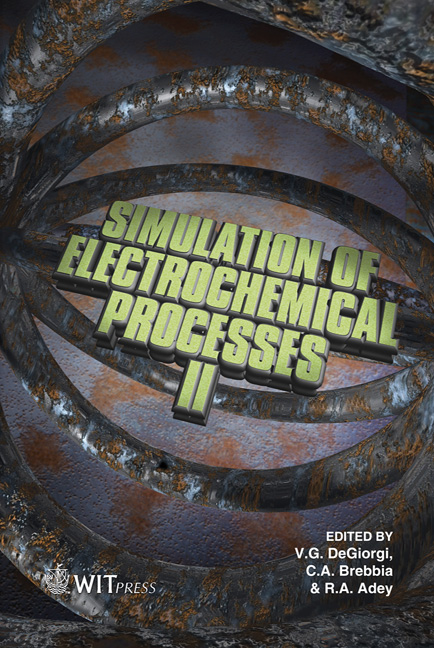Simulation Of The Electrical Transient During The Porous Anodizing Of Pure Aluminium Substrate
Price
Free (open access)
Transaction
Volume
54
Pages
10
Published
2007
Size
6,910 kb
Paper DOI
10.2495/ECOR070161
Copyright
WIT Press
Author(s)
F. Le Coz, L. Arurault & R. S. Bes
Abstract
Electrical transients were recorded during the anodizing of highly pure aluminium in phosphoric electrolyte, carried out in potentiostatic mode (25-150V) or in galvanostatic conditions (20-1000A/m2). The experimental reproductibility is satisfactory, according to the low standard deviations. For the galvanostatic mode, the voltage experimental transients show a \“bell shape”, characterized by some significant parameters (S0, tm, Vm, Vss). Two mathematical relations were then proposed to simulate the voltage transient curves considering two parts, i.e. before and after the maximum (Vm, tm). The validity of these computational simulations was next checked by comparison with the corresponding experimental curves. All the corresponding fittings of voltage transients are in good agreement, especially for the first part of the experimental curves, within the current densities range. Then, these computational simulations were correlated with the corresponding experimental FEG-SEM plan-views. By analogy with the nucleation phenomena during the metal electrodeposition, the \“bell shaped” curves could be interpreted by the initial formation of a highly resistive oxide layer, followed by the subsequent appearance of the nanopores. The pores formation was in part explained showing that the Vm experimental values obtained with the galvanostatic mode are closed to the previous critical voltage value Uc initializing the anodic dissolution phenomenon. Keywords: electrical transients, anodic film, simulation, nanopores, anodizing. 1 Introduction Anodizing of aluminium and its alloys is an established electrochemical process, discovered in 1855 by H. Buff and developed in 1911 by De Saint Martin.
Keywords
electrical transients, anodic film, simulation, nanopores, anodizing.





